The question of whether science and religion are at odds or generally compatible has long been a topic of interest to philosophers, theologians and scientists, among others.
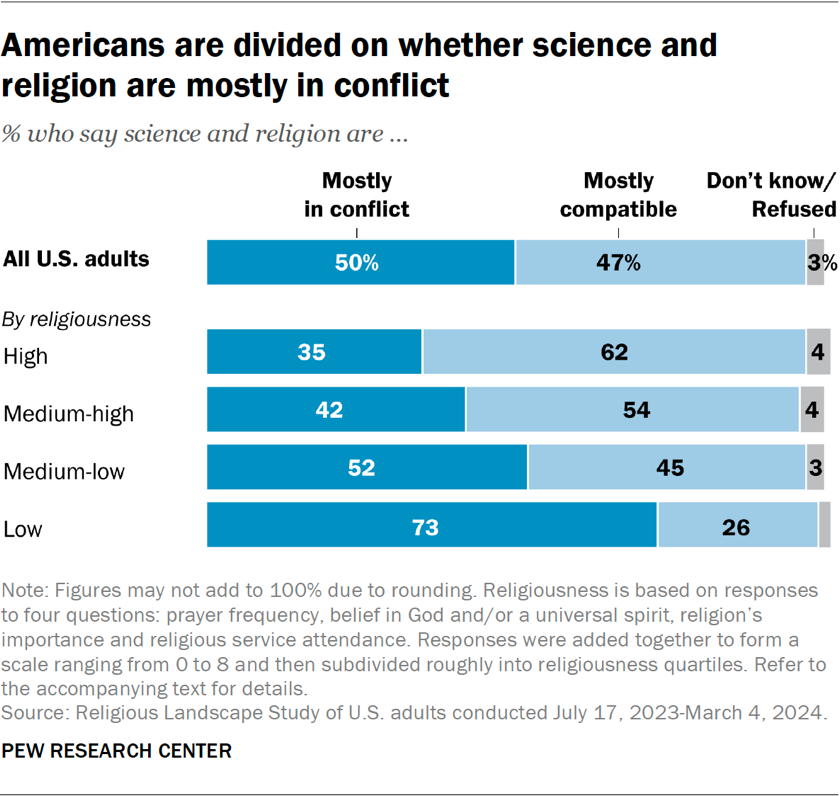
In the Religious Landscape Study (RLS), we asked respondents whether science and religion are “mostly in conflict” or “mostly compatible,” and Americans are basically split on this topic. Half of U.S. adults say that science and religion are mostly in conflict, while 47% say that science and religion are mostly compatible.
The more religious they are, the more likely Americans are to say science and religion are mostly compatible. The less religious they are, the more likely they are to see conflict between science and religion.
Among Americans with low levels of religious engagement, 73% say science and religion are mostly in conflict, roughly twice the share of highly religious Americans who take the same position (35%).83
The survey also finds that Americans of all religious backgrounds are more likely to view science as beneficial than as harmful for American society. About half of U.S. adults (52%) say science does “more good than harm.”
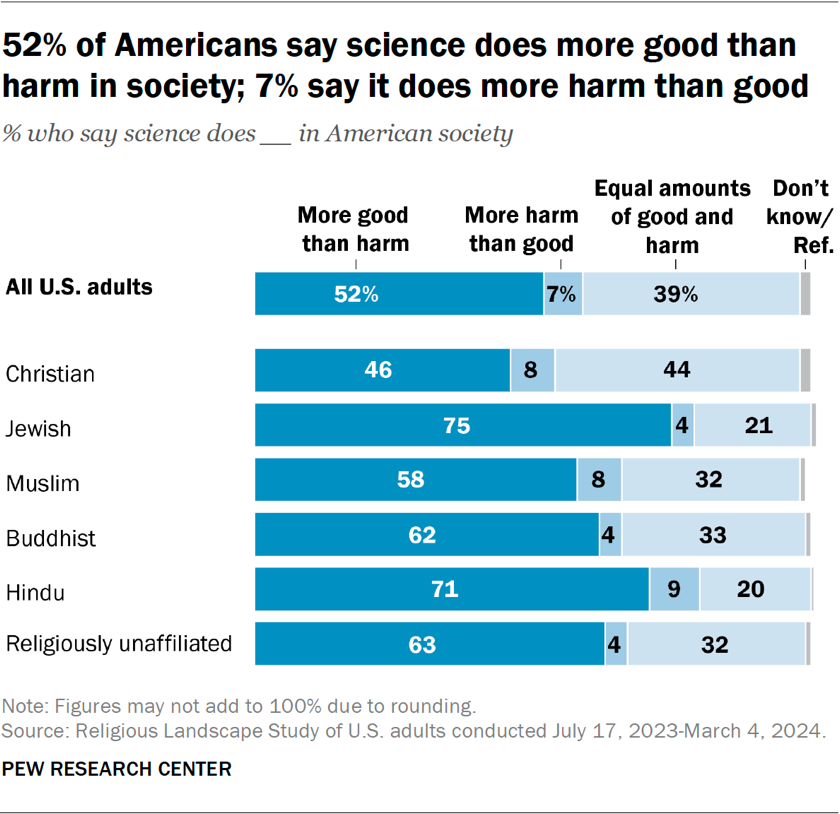
Just 7% of Americans overall say that science does “more harm than good.”
Meanwhile, 39% say science does “equal amounts of good and harm.”
At the same time, most Americans do not expect science to have answers to everything. Nearly seven-in-ten U.S. adults say “there are some things that science cannot possibly explain.” About three-in-ten say “there is a scientific explanation for everything, even if we don’t understand how everything works.”
Even most Americans with positive views about science’s impact believe that science cannot explain everything. About six-in-ten who say science does more good than harm also say there are some things that science cannot possibly explain.
Read more about how religious groups answer questions about:
- The compatibility of science and religion
- Whether science does more good or harm in American society
- Whether science can explain everything
Views on compatibility of science and religion
Religiously unaffiliated Americans – people who identify as atheist, agnostic or “nothing in particular” – are more likely than U.S. adults who identify with a religion to say that religion and science are mostly in conflict (68% vs. 42%).
And, among the unaffiliated, atheists (83%) are more likely than agnostics (69%) and those who describe their religion as “nothing in particular” (64%) to think that science and religion conflict.
Looking just at Christian subgroups, 74% of members of the Church of Jesus Christ of Latter-day Saints (widely known as Mormons) say that science and religion are mostly compatible, as do 56% of Protestants and 52% of Catholics.
Two-thirds of Muslims also see science and religion as compatible, while 56% of Buddhists say science and religion are in conflict.84
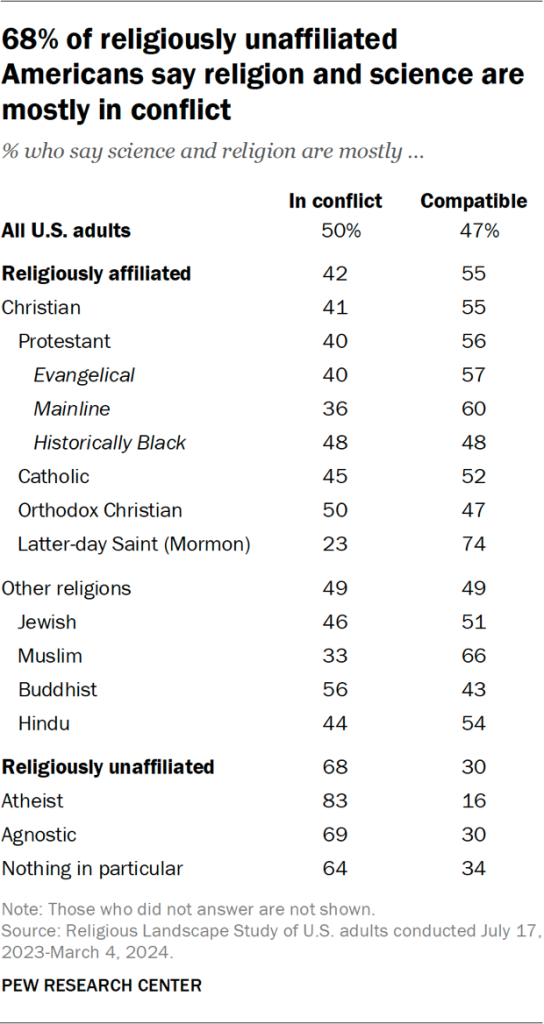
Views on whether science does more good or harm in American society
Nearly half of Americans who identify with a religion say science does more good than harm (48%), while 8% say it does more harm than good. The remaining 43% say it does equal amounts of good and harm.85
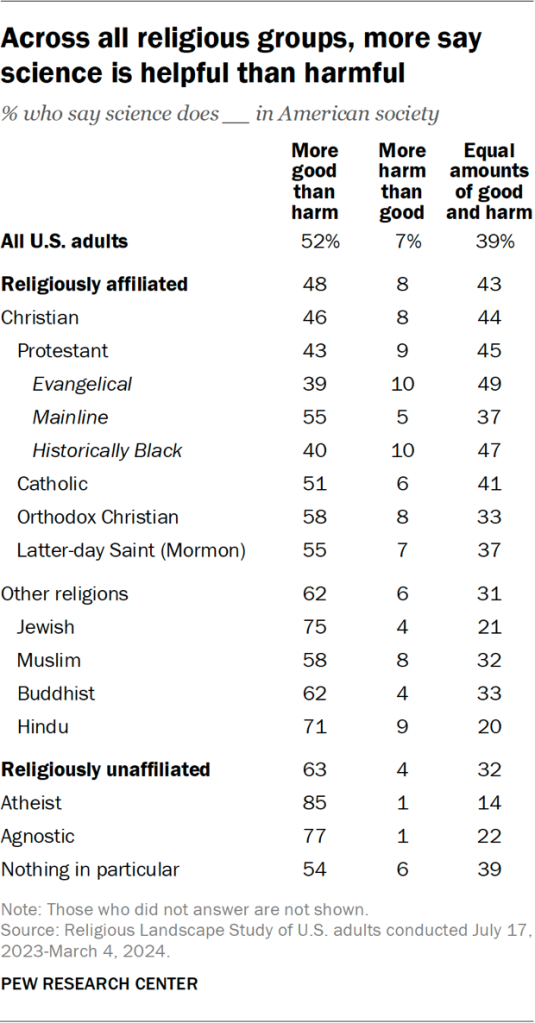
Among Christian subgroups, there are some differences on this question. About half or more of Orthodox Christians (58%), mainline Protestants (55%), Latter-day Saints (55%) and Catholics (51%) see science as doing more good than harm, compared with 40% of members of the historically Black Protestant tradition and 39% of evangelical Protestants.
Meanwhile, a majority of U.S. adults of non-Christian religions (62%) say science does more good than harm, higher than the 46% of Christians overall who take this stance.
Among religiously unaffiliated Americans, 63% say science does more good than harm. This includes:
- 85% of atheists;
- 77% of agnostics; and
- 54% of those who describe their religion as “nothing in particular.”
Views on whether science can explain everything
Religiously unaffiliated Americans are a lot more likely than U.S. adults who identify with a religion to say there is a scientific explanation for everything (49% vs. 21%). They are a lot less likely to say that there are some things that science cannot possibly explain (49% vs. 77%).86
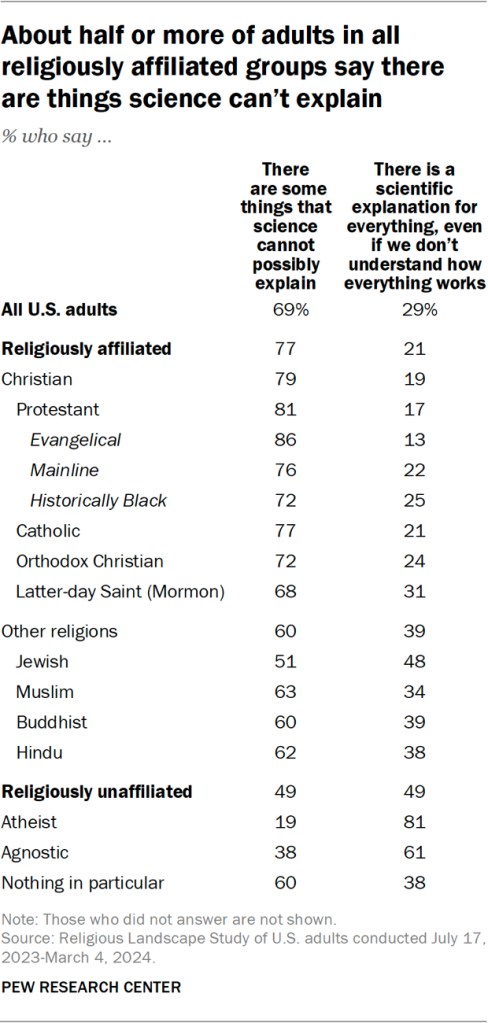
Among the unaffiliated, 81% of atheists see science as holding the answers to everything, compared with 61% of agnostics and 38% of those who describe their religion as “nothing in particular.”
Meanwhile, majorities of nearly every religiously affiliated group analyzed say “there are some things science cannot possibly explain.”
Jewish Americans are an exception among the religiously affiliated, with 51% saying there are some things science cannot explain and 48% saying there is a scientific explanation for everything.




